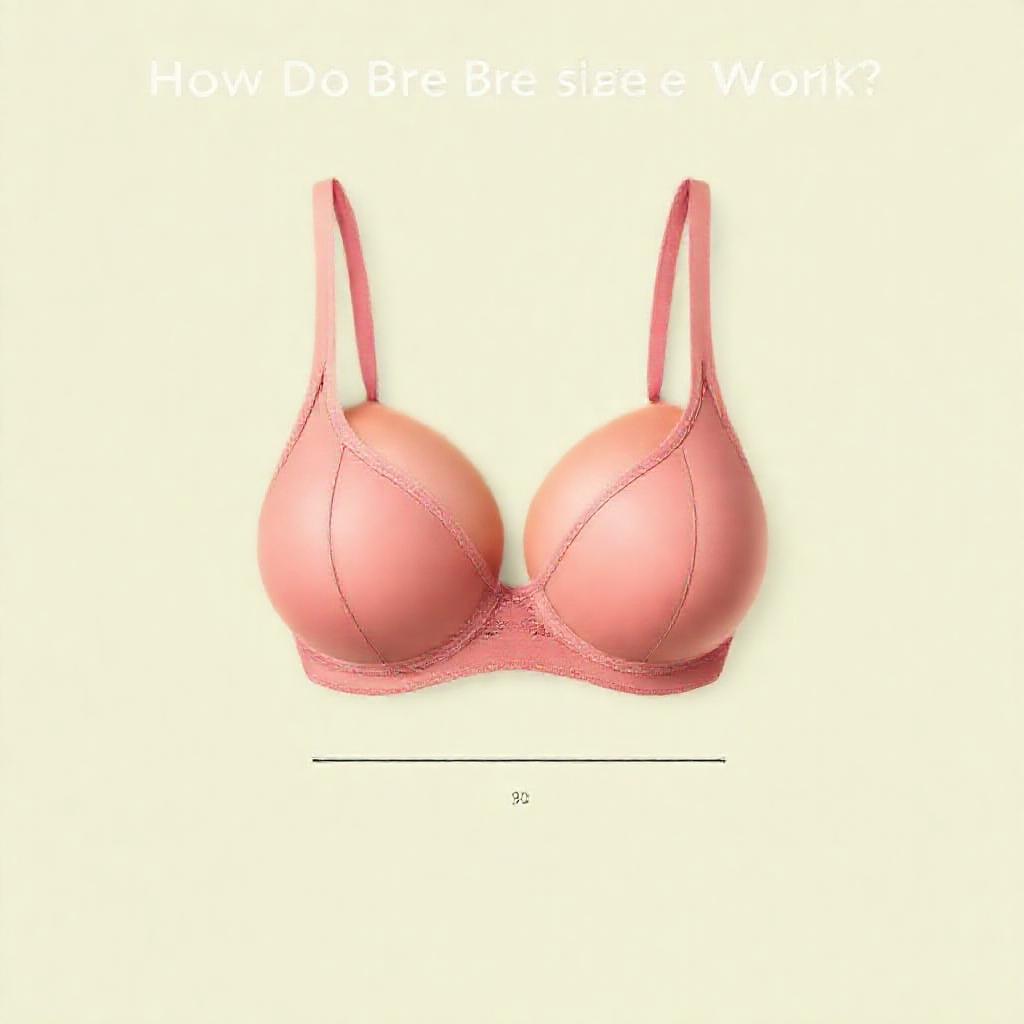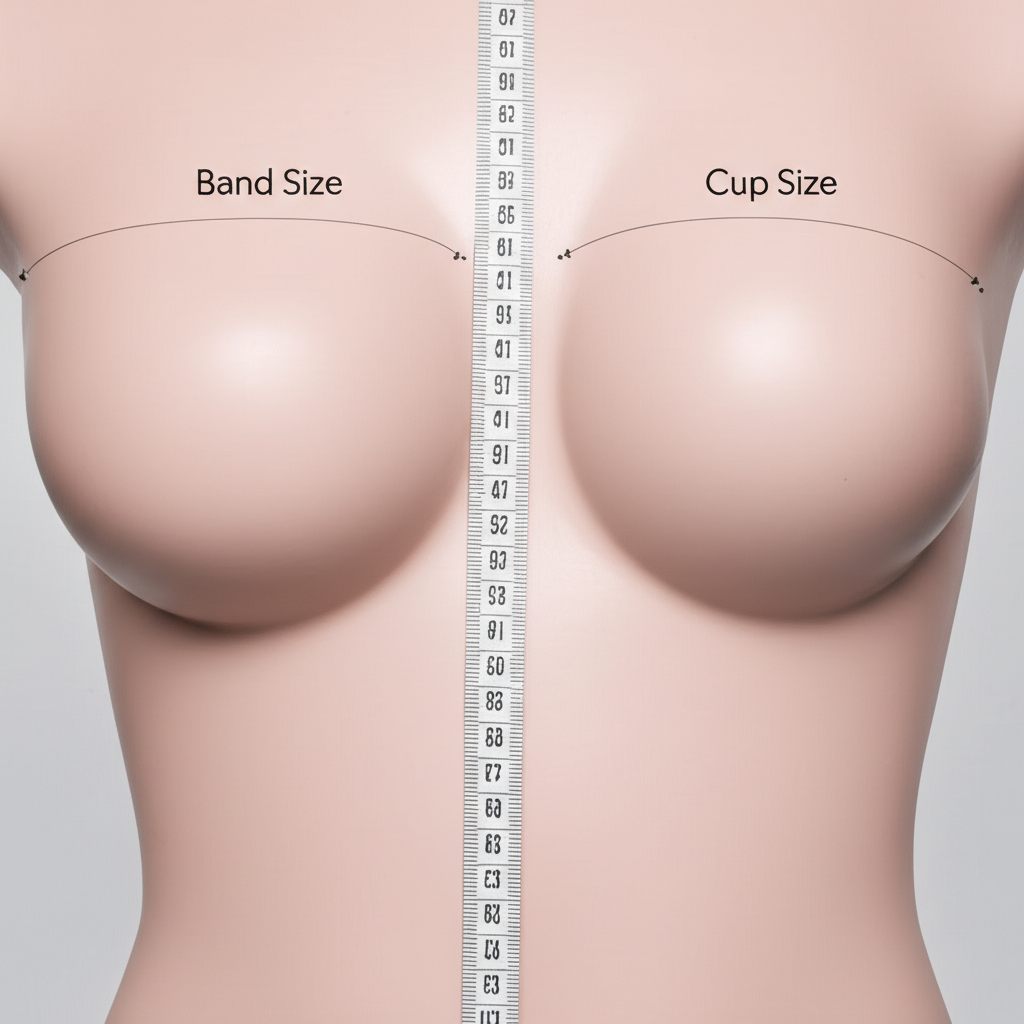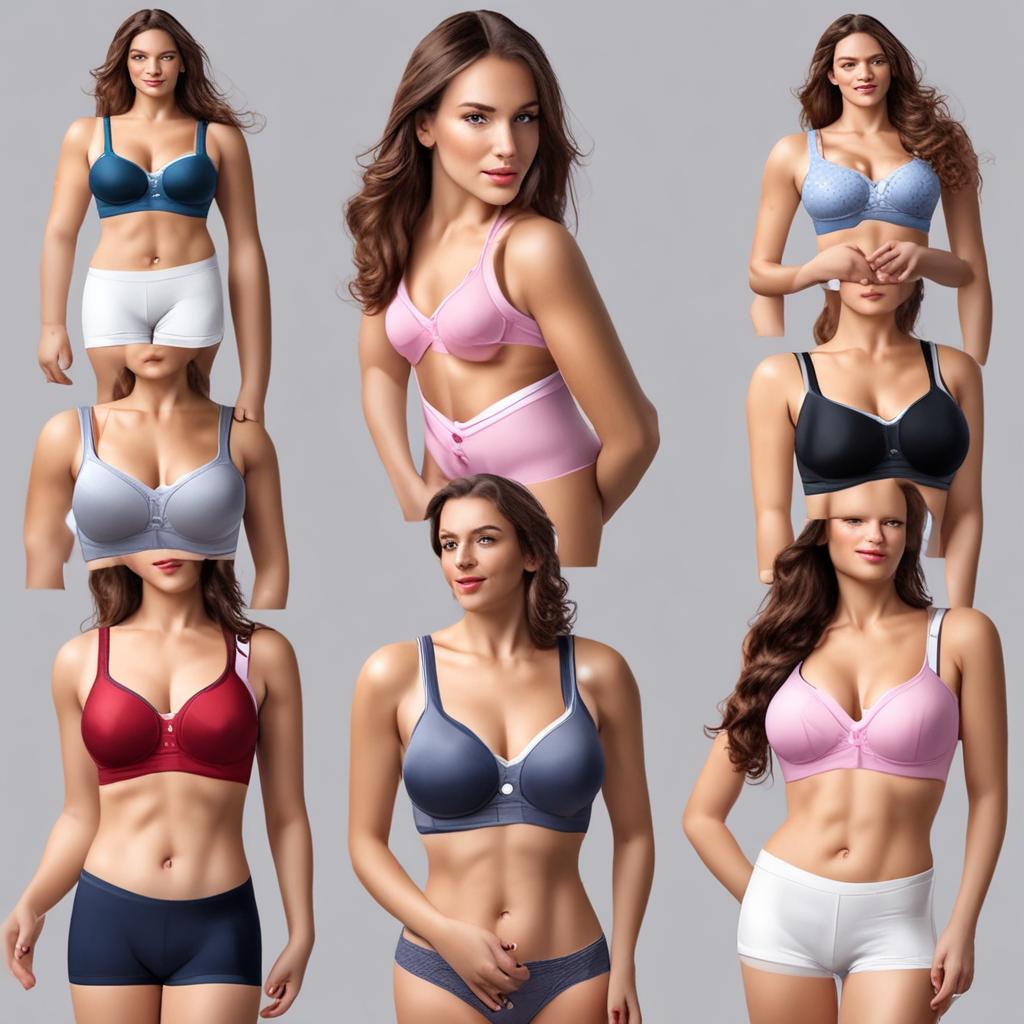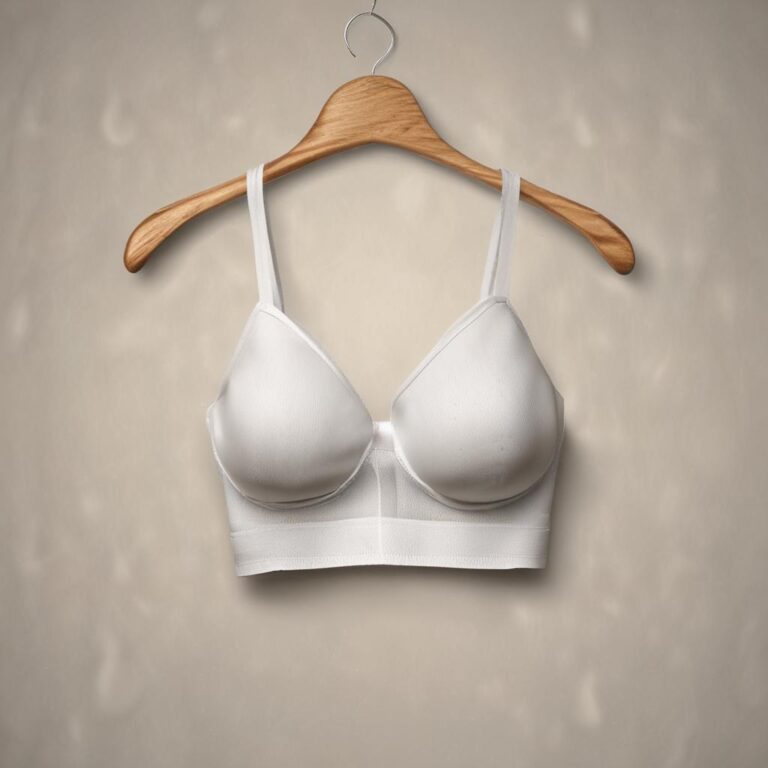Finding the perfect bra can feel like solving a complex puzzle. With so many sizes, styles, and regional variations, it’s no wonder many people feel overwhelmed. Yet, wearing the right bra size is more than just a matter of comfort—it’s essential for your health, posture, and confidence. This guide will demystify the process of bra sizing, helping you understand how sizes work, how to measure yourself accurately, and how to ensure a perfect fit every time. Let’s dive in!
Step-by-Step Process
Measure Band Size
Wrap a measuring tape snugly around your ribcage under bust.
Measure Bust Size
Measure the fullest part of your bust while wearing a non-padded bra.
Calculate Cup Size
Subtract band size from bust size; each inch equals a cup size.
Determine Bra Size
Combine band size and cup size (e.g., 34B for 34-inch band and B cup).
Fit Check & Adjust
Try on bras to ensure proper fit and adjust if needed.
Process infographic for How Do Bra Sizes Work
Understanding Bra Size Basics
The Anatomy of a Bra Size (Band vs. Cup)
Bra sizes consist of two main components: the band size (a number) and the cup size (a letter). The band size represents the measurement around your ribcage, just below your bust, while the cup size indicates the volume of your breasts. Importantly, band and cup sizes are interdependent—a larger band size with a smaller cup can provide the same coverage as a smaller band with a larger cup. Understanding this relationship is key to finding the right fit.
Common Sizing Systems (US, UK, European)
Bra sizing varies across regions, adding to the confusion. In the US, sizes are typically represented as a number followed by a letter (e.g., 34B). The UK uses a similar format but may include double letters (e.g., 34DD). European sizes often use centimeters for band measurements and may label cups differently (e.g., 75B). Knowing these differences is crucial when shopping internationally or online.
How to Measure Your Bra Size
Tools and Preparation
To measure your bra size accurately, you’ll need a flexible measuring tape and a well-fitting, non-padded bra. Avoid wired or grippy bras, as they can skew your measurements. Stand in front of a mirror to ensure the tape is level and snug but not tight.
Measuring Your Underbust
Start by measuring your ribcage just below your bust. Wrap the tape snugly around your body, ensuring it’s parallel to the ground. Record this measurement in inches or centimeters, depending on your sizing system. This number forms the basis of your band size.
Measuring Your Overbust (Chest Size)
Next, measure around the fullest part of your bust. Keep the tape level and avoid pulling too tightly. The difference between your overbust and underbust measurements will determine your cup size. For example, a 1-inch difference typically corresponds to an A cup, while a 2-inch difference equals a B cup.
Translating Measurements into Bra Sizes
Calculating Your Band Size
In the US system, add 4 or 5 inches to your underbust measurement to determine your band size. For example, if your underbust measures 30 inches, your band size is likely 34 or 35. In European systems, the band size is often the underbust measurement in centimeters rounded to the nearest multiple of 5 (e.g., 75 cm).
Determining Cup Size
The difference between your overbust and underbust measurements determines your cup size. Use a bra size chart to map this difference to the corresponding letter. For instance, a 3-inch difference usually equates to a C cup. Keep in mind that cup sizes can vary slightly between brands.

Regional Size Conversions
Bra sizes can differ across regions, so it’s important to understand conversions. For example, a US 34B is equivalent to a UK 34B but may differ slightly in European sizing. Always check brand-specific size charts, as some labels may run larger or smaller than standard measurements.
Key Factors Affecting Bra Fit
Band Size vs. Cup Size
The band size provides the foundation of support, while the cup size accommodates breast volume. A well-fitting band should feel snug but not constricting, and the cups should fully encompass your breasts without gaping or spilling. Remember, a larger band with a smaller cup can offer the same coverage as a smaller band with a larger cup.

Band Tightness and Width
The tightness and width of the band play a significant role in comfort. A too-tight band can cause discomfort, while a too-loose one won’t provide adequate support. Additionally, wider bands distribute pressure more evenly, reducing strain on the shoulders and back.
The Role of Bra Styles
Different bra styles, such as sports bras, balconettes, or strapless bras, can affect sizing and fit. For example, a sports bra may require a tighter band for added support, while a strapless bra may need a snugger fit to stay in place. Always try on different styles to find the best fit for your needs.
Common Misconceptions About Bra Sizes
“One Size Fits All” Myths
There’s no such thing as a one-size-fits-all bra. Breast shape, body type, and personal preferences all influence the ideal fit. Don’t assume your size in one brand or style will work for another—always measure and try on new bras.
Reliance on Old Sizes
Your body changes over time due to factors like weight fluctuations, pregnancy, or aging. Relying on an old bra size can lead to discomfort and poor support. Make it a habit to remeasure yourself regularly, especially after significant life changes.
“Bigger Band = Bigger Cup” Fallacy
Band and cup sizes are independent yet interconnected. A larger band doesn’t necessarily mean a larger cup, as the two work together to provide the right fit. Focus on finding the correct combination for your unique measurements.

The Importance of a Proper Fit
Wearing the right bra size offers numerous benefits, from reducing back and neck pain to enhancing your silhouette. A well-fitting bra can also improve posture and prevent long-term damage caused by poor support. Consider getting professionally fitted or using online tools to ensure accuracy. Remember, comfort and support should always come first.
Conclusion
Understanding how bra sizes work is the first step toward finding the perfect fit. By measuring yourself accurately, learning about sizing systems, and considering factors like band tightness and style, you can ensure a comfortable and supportive bra experience. Don’t let past sizes or brand loyalty dictate your choice—prioritize fit and comfort above all else. Ready to find your perfect bra? Start measuring today and share your experience in the comments below!
FAQ Section
How do I measure my bra size without a measuring tape?
If you don’t have a measuring tape, you can use a string and a ruler. Wrap the string around your underbust and bust, then measure the length with the ruler. Keep in mind that this method may not be as accurate as using a flexible tape.
Why do my bra sizes differ between brands?
Bra sizing can vary by brand due to differences in design, materials, and target audiences. Always check the brand’s size chart and read reviews to gauge how their bras fit.
What if I’m between sizes?
If you’re between sizes, opt for the one that feels more comfortable. You can also try bras with adjustable bands or straps to customize the fit.
How often should I remeasure my bra size?
It’s a good idea to remeasure your bra size annually or after significant changes like weight loss, pregnancy, or surgery.
What’s the difference between band size and cup size?
Band size refers to the measurement around your ribcage, while cup size reflects the volume of your breasts. Together, they determine the overall fit and support of your bra.




